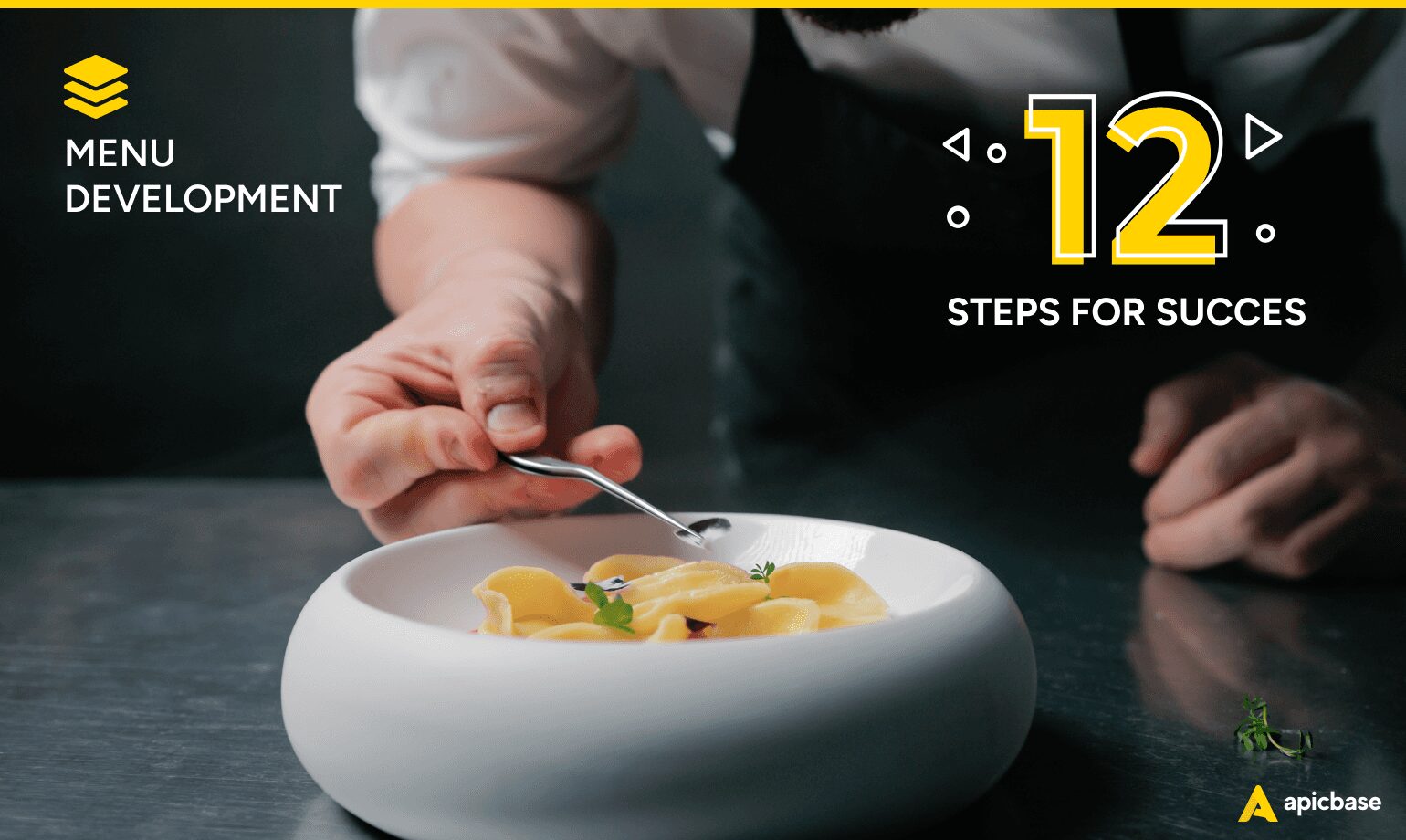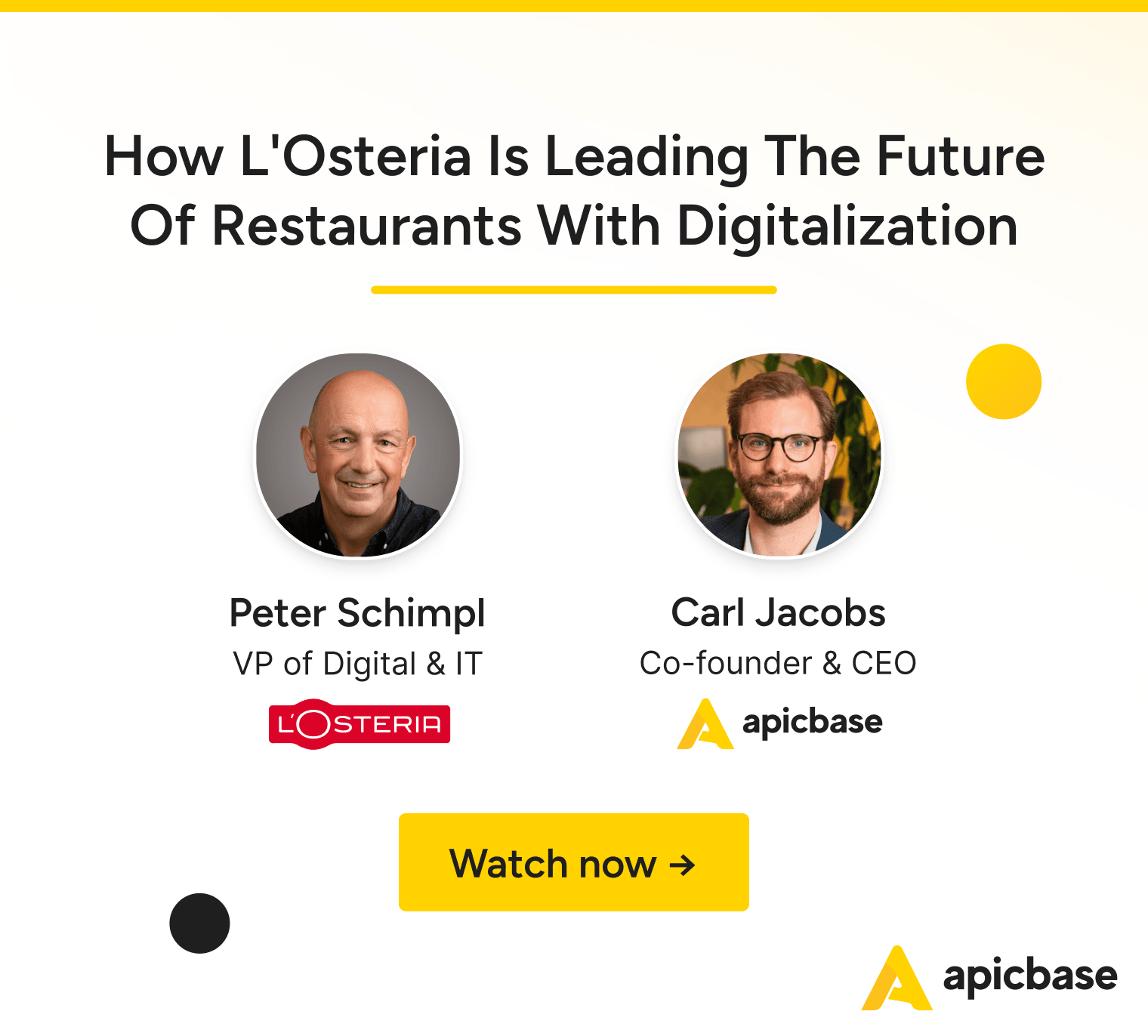Whether launching a new concept or expanding into a different market, menu development is critical for a restaurant’s success. That means balancing brilliant ideas with practicality and taking the time to consider all variables that can impact food costs, menu scalability, and customer first impressions.
Setting a final menu takes time, because there are many factors to juggle beyond recipes. Operational realities like ingredient sourcing, kitchen workflow, pricing strategy, and branding play a role in menu development.
Here, we’ll explore menu engineering and planning, including essential steps and ways to simplify so you can design a menu that is both tasty and profitable.
What is Menu Development?
Menu development is the process of aligning back-of-house culinary talent with operations management to design a profitable, sustainable menu that aligns with the brand. It involves an element of creativity but also requires controlling costs, ensuring consistency in recipes, and other critical components.
The fundamentals of menu development are engineering and planning. Let’s look at how those two strategies differ:
Menu Engineering

Like they need a roux to create a classic béchamel sauce, development chefs rely on menu engineering to arrive at an ideal menu.
Menu engineering isn’t just about creating recipes; it’s also about maximising a restaurant’s profitability by analysing the performance of each menu item. It requires a deep analysis of the variables that affect pricing and a method for consistently forecasting costs. Other considerations may include:
- Categorising menu items based on their profitability and popularity
- Whether ingredient costs and availability are predictable
- How ingredient shelf life or storage requirements impact recipe costs
- How to document allergens and accommodate food sensitivities
- Total costs for a single portion, including labour
- The average time it takes to prepare a dish, from start to service
- Profit margin per menu item
During the menu engineering phase, recipes may need to be revised several times to align with operational constraints.
The goal is to create final menu items that are profitable, scalable, and brand-consistent.
Menu Planning
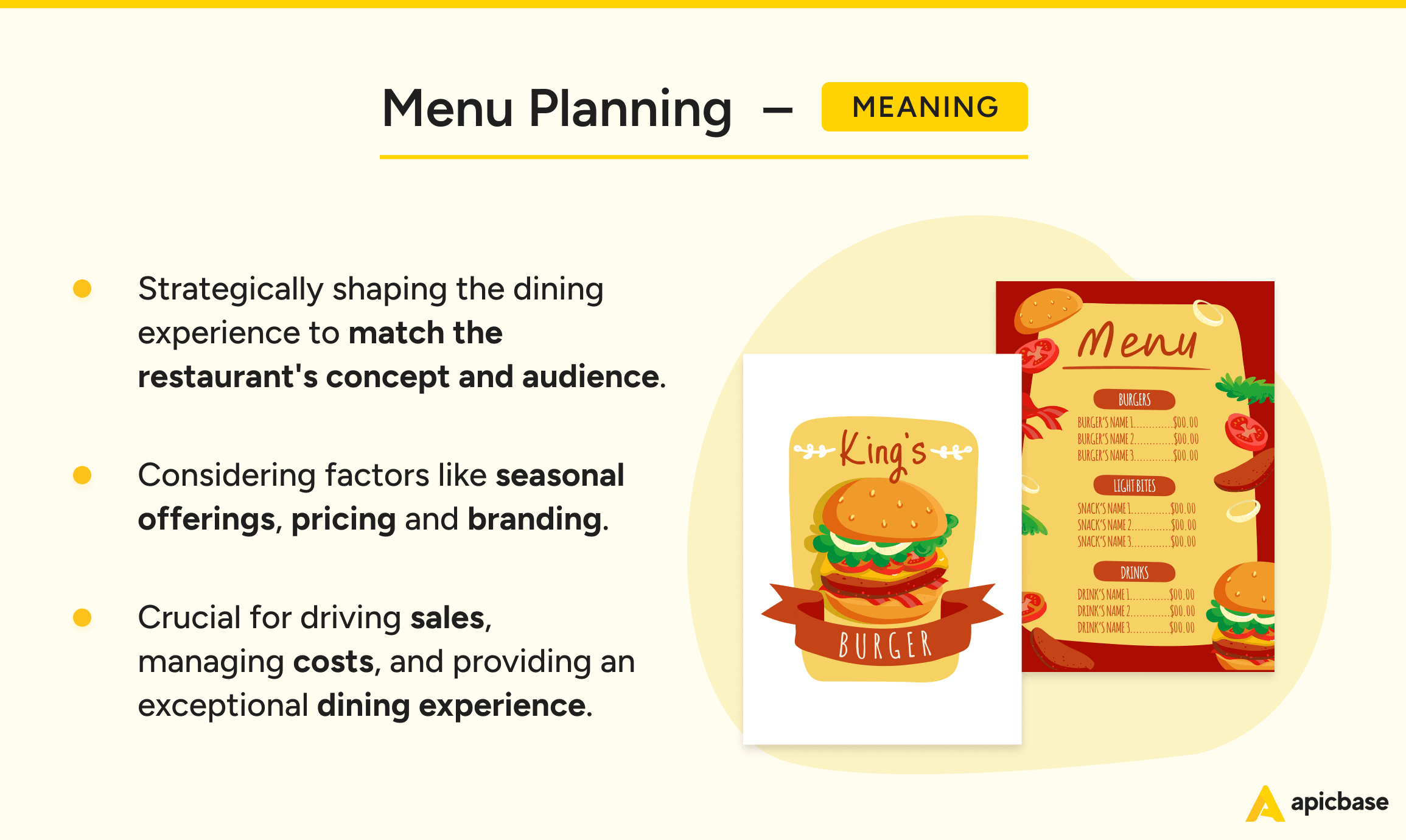
While engineering analyses recipes operationally, menu planning is the strategic roadmap for an entire menu. It’s about crafting an overall experience that resonates with the restaurant’s target market and concept.
Menu planning requires looking at the big picture beyond just individual dishes. It involves creating a narrative flow and mix of offerings that work harmoniously. Key considerations include:
- Mapping out plans for seasonal items and limited-time offers
- Ensuring the correct ratio for menu balance
- Establishing logical pricing architecture and perceived value
- Grouping related dishes into intuitive product clusters
- Identifying unique, signature differentiator items
- Reinforcing brand story through descriptive menu copy
With so many factors at play, menu planning is as much an art as engineering recipes themselves. Finding the right balance is crucial for driving sales, managing costs, and providing a best-in-class experience.
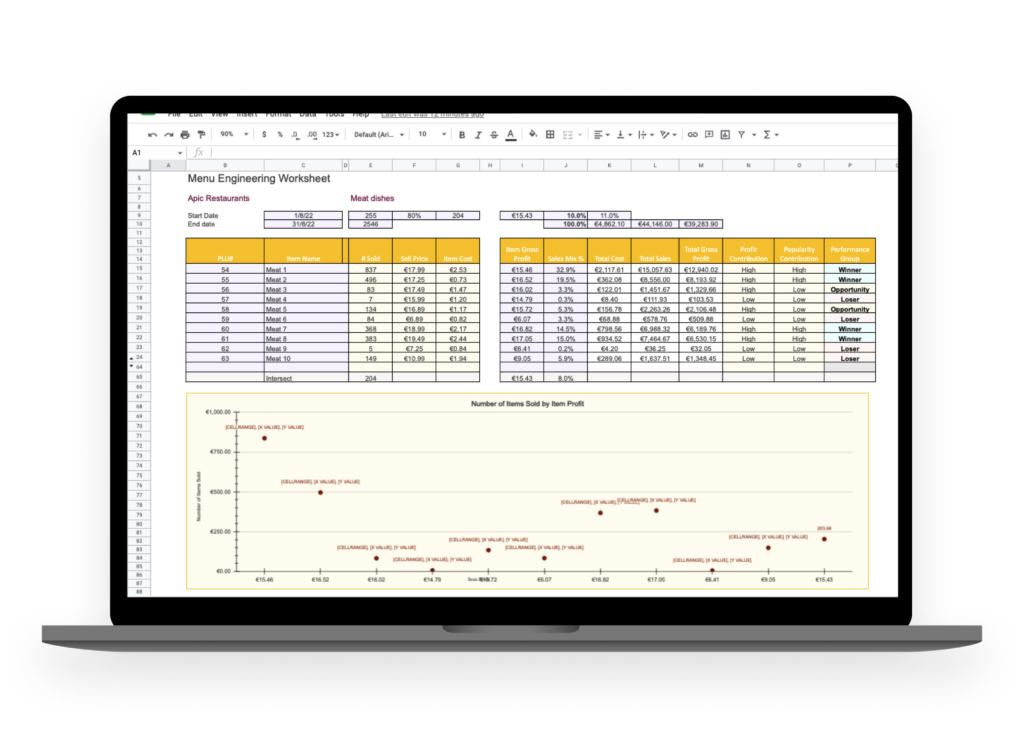
[Free Download] Menu Engineering Worksheet
Automate your menu calculations. Create profitable menus and identify opportunities, losers, workhorses and winners among your recipes.
What Are The Steps In Developing a Menu?
Developing a well-designed menu is essential for any restaurant, but it becomes absolutely critical when you’re a growing concept planning to launch new locations. A robust menu development process allows you to maintain consistency and quality as you scale operations.
Here are the key steps:

1. Stick with your concept
When expanding menus or launching new sites, it’s essential to remain consistent with your brand identity and customer promises. Ensure that any proposed new menu items align with your culinary vision and that key brand differentiators translate across markets. Signature dishes should provide a cohesive experience, reinforcing your restaurant’s uniqueness regardless of location.
Staying true to your concept builds brand consistency, which fosters customer loyalty and recognisability. This consistency is crucial as you scale up, helping customers feel at home in every location.
2. Evaluate your current menu
If updating an existing menu, analyse performance reports on best- and worst-selling items, profit margins, preparation challenges, and customer feedback. This data will help you decide what to retain, modify, or eliminate. Focus on standardising and scaling up the best-performing items while streamlining or removing underperformers.
This approach ensures the updated menu reflects customer preferences, simplifies preparation for kitchen staff, and aligns with financial goals. Keeping the menu efficient and customer-focused can create a consistently positive dining experience across your locations.
3. Understand your target audience
Define your audience’s demographics, dining occasions, and dietary preferences to create a menu that caters to their needs—considering regional tastes and preferences to ensure a good fit if expanding into a new market.
Research dietary trends and flavour profiles to uncover opportunities that appeal to customer segments where you’re launching new locations. Tailoring your menu to varying expectations based on these factors will enhance guest satisfaction and loyalty, helping your restaurant become a favourite among the diverse diners you serve.
4. Consider dietary restrictions
Offering vegetarian, vegan, and gluten-free options and clearly flagging allergens in your menu will help attract a wide range of customers affected by allergies or lifestyle restrictions. A diverse menu that caters to different dietary needs also helps your restaurant establish a reputation for inclusivity.
Make sure your team understands cross-contamination risks, training them to avoid allergen exposure by following safe food handling practices. This careful attention to detail will build trust with diners who rely on your establishment for their dietary needs.
5. Research ideas
Seek ways to offer unique flavours or presentations that align with your concept while appealing to your customers. Analytics can help you spot emerging trends, and testing ideas before scaling them across all locations ensures they’ll work for your menu.
When designing a menu, be sure to balance innovation with practicality. Stay updated on national and international culinary trends, but keep your brand and customers’ preferences in mind. Although novelty items can attract attention, they should be feasible to execute consistently across all locations.
6. Assess the competition
Analysing the menus of comparable concepts, particularly direct competitors, can provide valuable insight into how to design yours. Identify their strengths and weaknesses, and differentiate your offerings to stand out.
Before entering new markets, evaluate local competitors to ensure your products are distinctive while meeting market demands. Understanding your competition is key to refining your offerings and emphasising your unique value. This knowledge will guide you in creating a compelling, competitive menu that resonates in new markets.
7. Think about your resources
Before adding new menu items, consider equipment constraints, kitchen space, staffing, and workflows. Design scalable, practical recipes across your locations, avoiding overly complex or labour-intensive dishes that could slow down production.
Effective production planning also requires a robust supply chain to meet increased production needs and cross-trained staff to handle critical roles efficiently. Standardising processes ensures a consistent customer experience across sites, improving efficiency and allowing your teams to deliver high-quality dishes consistently.
8. Consider sourcing, sustainability, and seasonality
Your supply chain and procurement management should support large-scale ingredient purchasing. Sourcing opportunities vary by market, so explore local options where possible. Plan for sustainable practices and seasonal sourcing to improve ingredient quality while reducing environmental impact.
Establishing relationships with suppliers helps you maintain reliable sourcing, and monitoring ingredient supply allows you to adjust menus proactively. These strategies will ensure your restaurant maintains ethical standards and consistently provides customers with high-quality, fresh dishes.
9. Create your recipes
After setting your insights and parameters, start testing and refining recipes. Prioritise executing your core items flawlessly before adding variety to the menu. Test internally across various palates, and be honest about your findings. Focusing on quality over quantity can help you ensure consistency and maintain high standards.
Develop detailed documentation to ensure every location can reproduce dishes accurately, considering portion sizes, preparation time, and plating techniques. With comprehensive instructions and standardised processes, your teams can replicate the same flavours and presentation across all locations.
10. Calculate costs and prices
Verify that your menu aligns with financial goals by carefully reviewing food costs, portion controls, and pricing strategies. Margins are critical when scaling, so accurate recipe costing is vital for profitability.
Designing a menu with similar ingredients that you can purchase in bulk and adjusting portion sizes ensures optimal value without compromising quality. Every percentage point saved contributes significantly to profit margins across multiple locations, helping your restaurant achieve sustainable profitability even as it expands.
11. Analyse and iterate
Launching is only the beginning — analysing and improving your menu must be ongoing. Use initial launch data to identify improvement opportunities and refine the menu based on performance metrics and customer feedback.
Continuous iteration helps your restaurant keep up with market trends, changing customer preferences, and operational efficiencies. Be proactive with data analysis and open to phasing out items that don’t meet evolving customer needs, ensuring your menu stays relevant and competitive.
12. Implement training
Collaborate with culinary teams to create thorough training programmes for new locations. Training should cover ingredient sourcing, food safety, preparation techniques, and customer interaction. This will help you ensure each plate meets the quality standards that shape your menu.
Proper training and documentation are crucial to maintaining consistency and replicating your brand’s quality standards across all locations. Well-trained teams help deliver a consistent customer experience, strengthening your restaurant’s reputation and brand identity.
How To Simplify Menu Development
Menu development requires coordinating many interrelated factors across multiple locations. Restaurants need a way to centralise information and document every step in the menu development process — from ideation and costing through execution and iterations.
A comprehensive restaurant management platform can offer many features to simplify the menu development process. Look for the following:
Menu Management
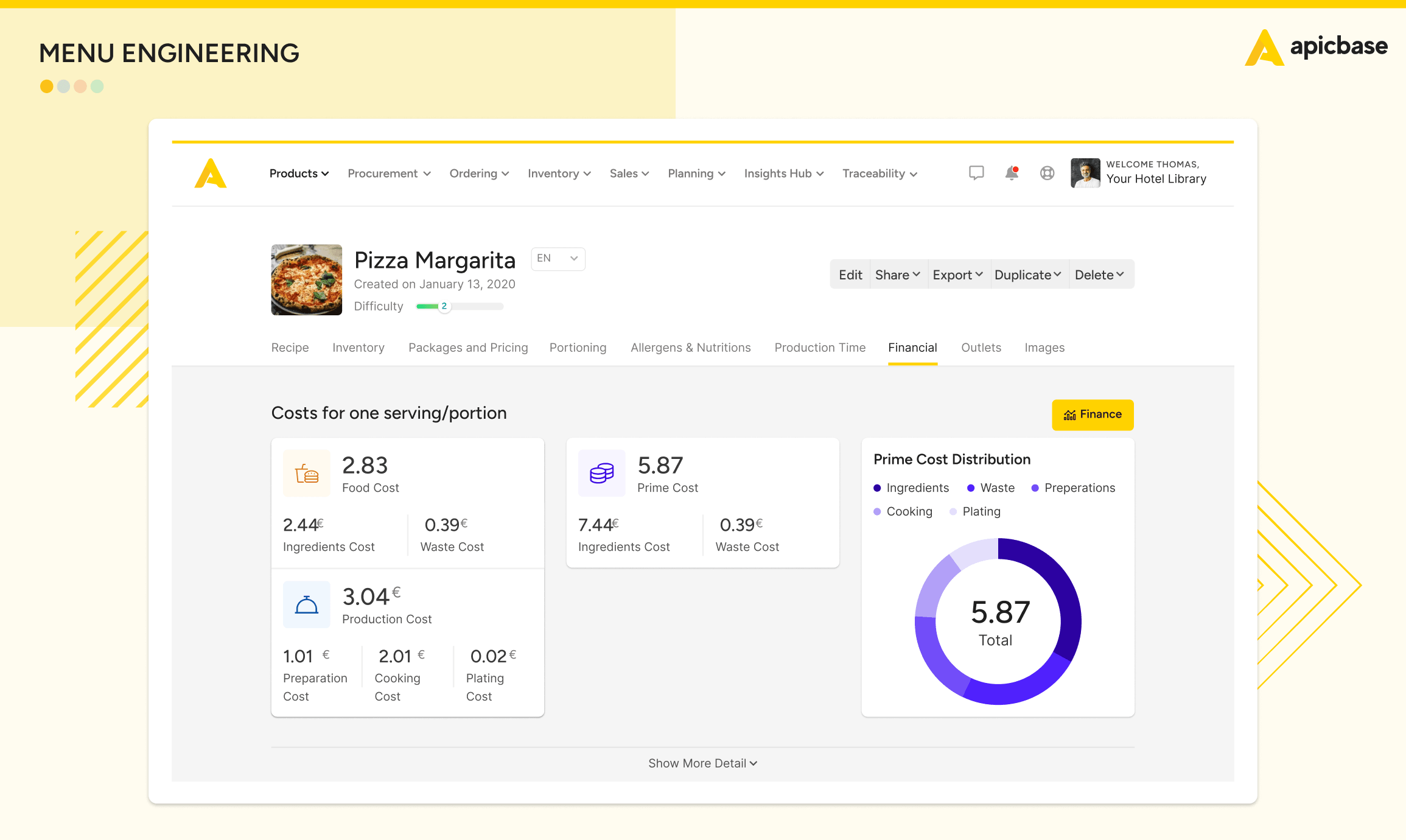
With centralised menu management, cross-functional teams can work together seamlessly on menus and recipes. A unified platform automates food costing, margin controls, nutrient calculations, and allergen reporting across locations to ensure consistency at every site.
This technology also streamlines rollouts to different locations and dynamically pushes updates to keep everyone in the loop. By centralising these functions, restaurants can ensure that every location adheres to the same standards, reducing errors and improving efficiency.
Procurement
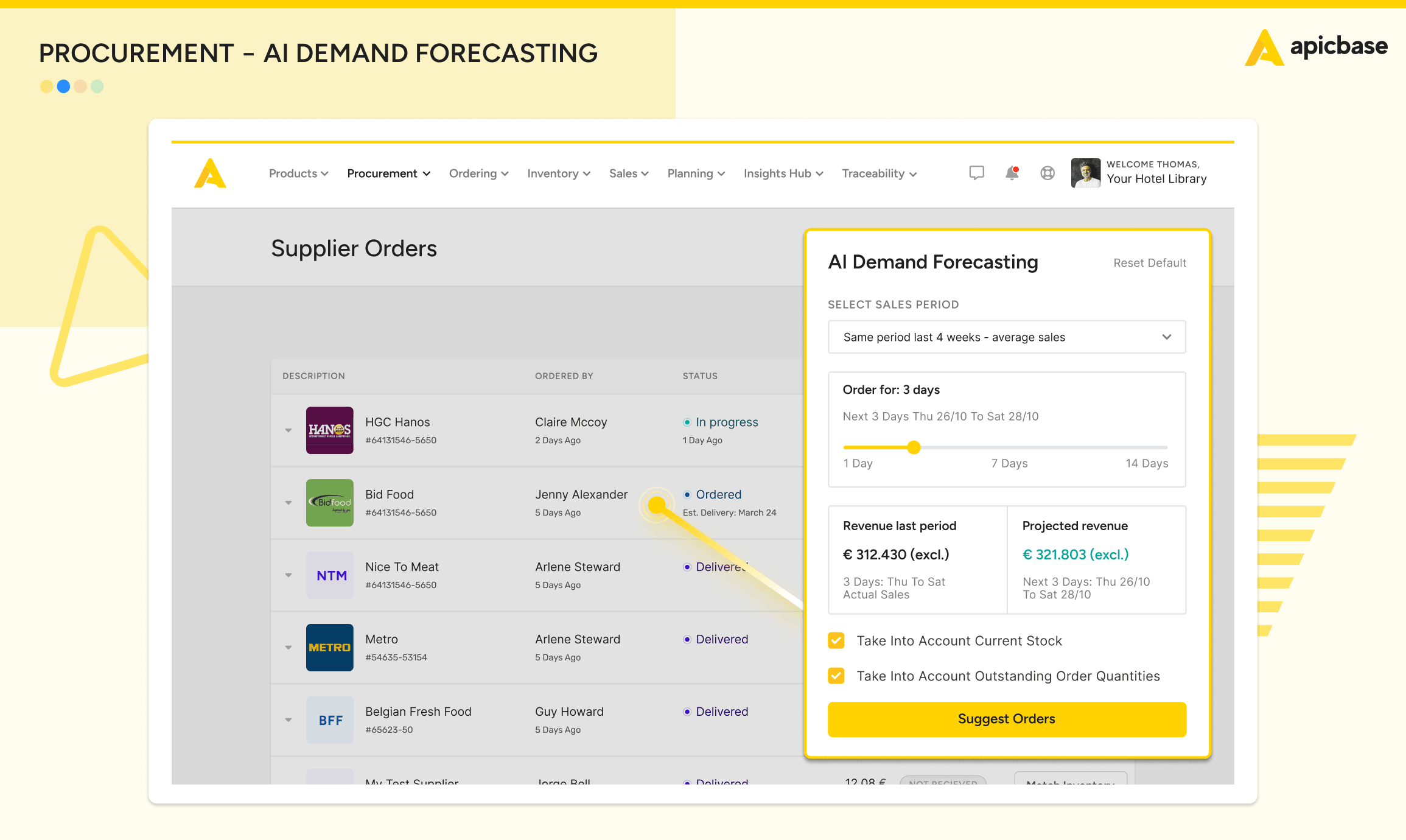
Integrating procurement means that the same approved data on ingredients and recipes flows across all areas of your business — from supply chain planning to automated ordering to inventory management. Kitchens always have what they need to consistently execute menus as designed.
This integration reduces the risk of ingredient shortages and overstocking, ensuring each menu item has the correct ingredients. Automated procurement also helps negotiate better prices and maintain strong supplier relationships.
Inventory Management
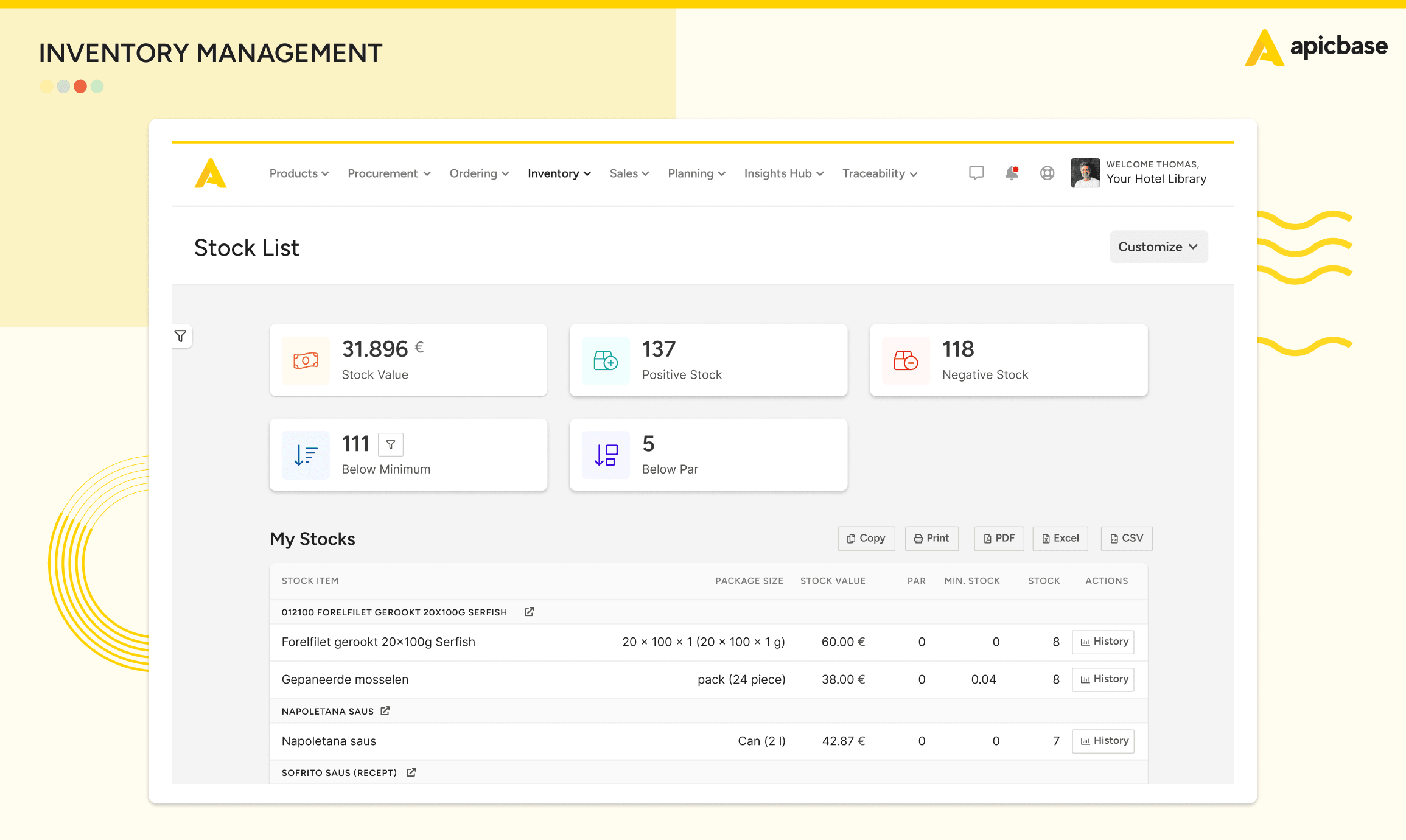
Item-level inventory provides complete traceability on ingredients from distributor to depletion. This data powers precise food costs, tighter portion controls, and smarter purchasing decisions.
By tracking every ingredient’s journey, restaurants can identify waste points, optimise stock levels, and enhance food safety compliance. Inventory management tools can also forecast future needs based on historical data, helping restaurants plan effectively and reduce wastage.
Analytics and Insights
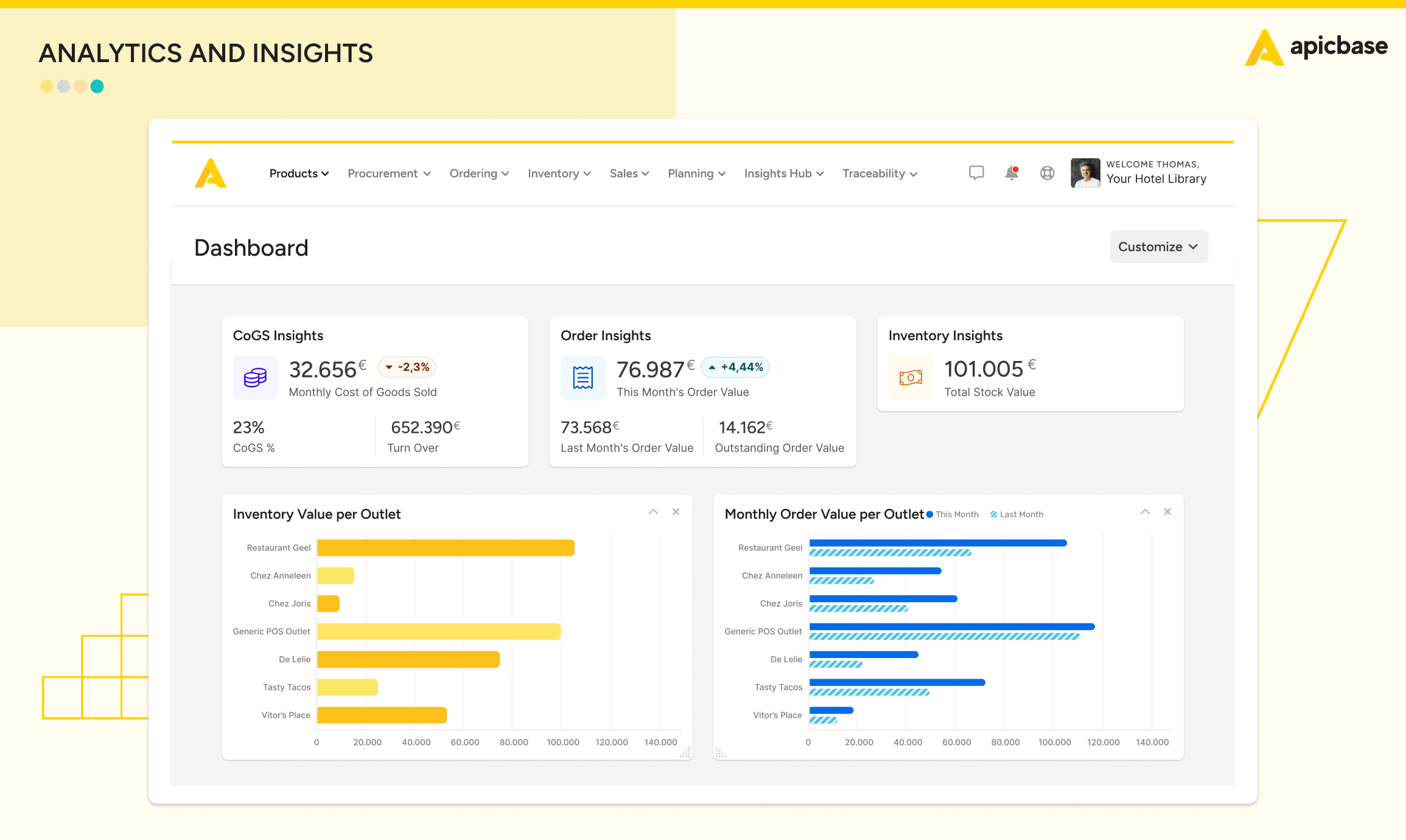
By consolidating data across the development lifecycle, reporting dashboards can analyse critical metrics for menu performance across all venues. With a single source of truth, it is easier to spot sales trends, consumer preferences, and ingredient performance to guide menu planning.
Real-time analytics mean restaurants can quickly adapt to market changes, refine their offerings, and enhance profitability. These insights can also support marketing strategies, helping to promote popular dishes and introduce new ones effectively.
Unleash Data-driven Menu Management
Apicbase is the all-in-one menu management solution that unifies every facet of menu development for multi-unit restaurant and hospitality groups. With comprehensive visibility and a single source of truth, Apicbase empowers your team to spend less time juggling systems and more time innovating. It provides crucial data to help evaluate your menu, resources, and food costs effectively so you can refine your strategy with confidence.
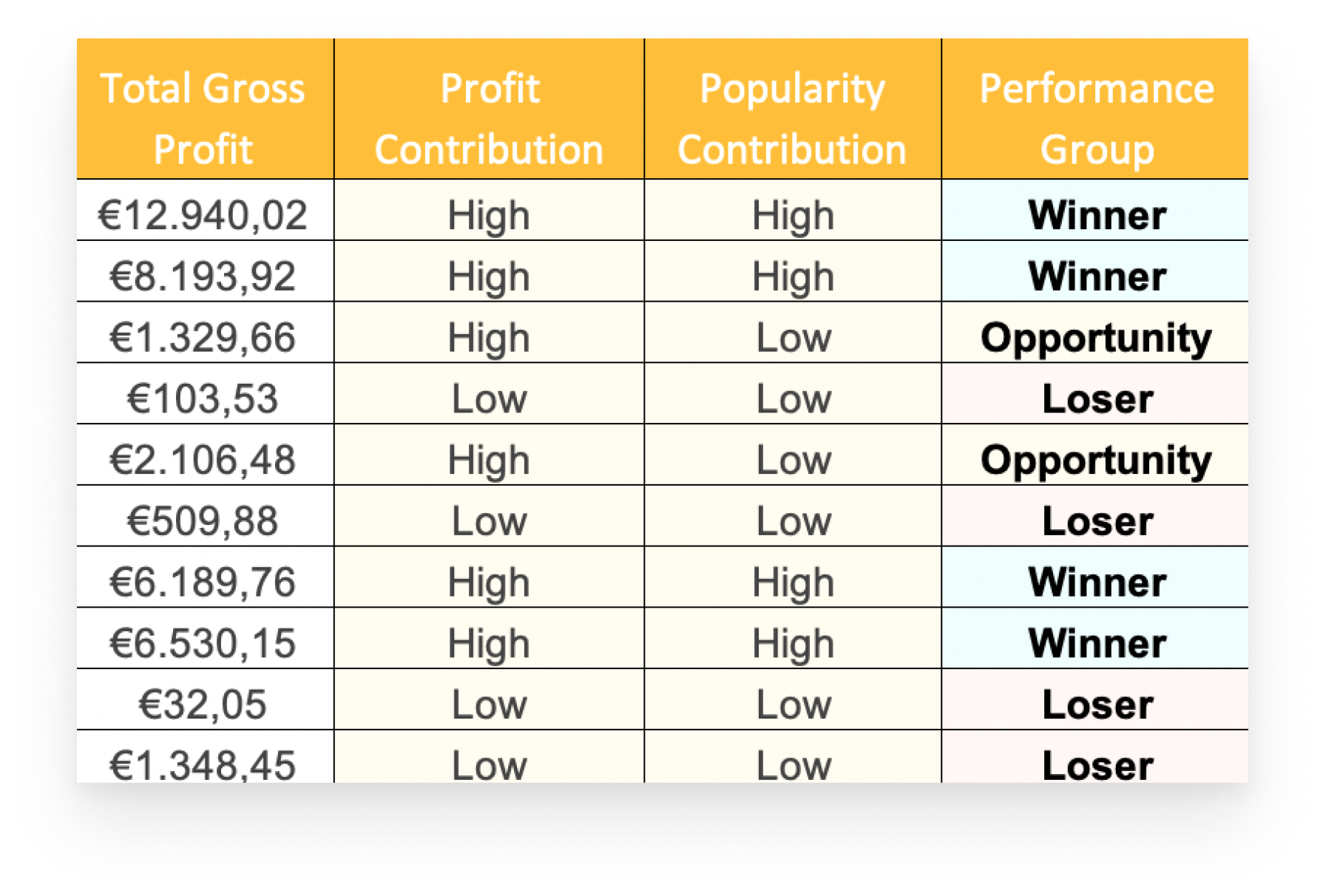
Ready to Transform Your Restaurant Operations?
See how Apicbase brings clarity to every stage of menu development and management.
